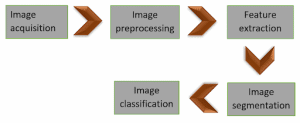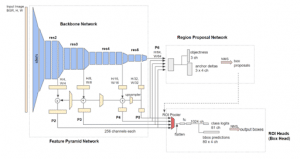Object detection is considered a popular computer vision task that detects and finds specific elements within a frame. Currently, it is employed across a variety of applications such as human recognition and face recognition. It has been a challenge for many years to find an object from an image. The challenges of object detection are solved with the help of Detectron 2. Detectron2 consists of a zoo library that includes all the pre-trained models that are already trained on the COCO dataset. It is a framework for image segmentation and object detection. This blog post will explore how detecron2 will fit on the custom dataset. Training of Detectron2 consist of six step and all these steps are exploring step by step in this blog post.
What is object detection?
Object detection is considered the most demanding and essential topic inside computer vision and has gained much prominence over the past decades. Object detection seems to be the most significant achievement of computer vision and deep learning since it detects and classifies objects inside images.
Bounding boxes examine the most frequent methods for producing representations from an object. Such detection models are trained and can be utilized to predict one or more specific objects. Object detection detects the appropriate thing by employing the particular and distinct attributes of every category. After the invention of deep learning and computer vision techniques, object detection challenges are also increases.
Object detection aimed to create computational methods and frameworks which give some of the essential fundamental chunks of knowledge required via computer vision technologies.

Figure 1: Object Detection
What is the importance of deep learning in computer vision?
Deep learning is considered the field of machine learning and learning procedures in deep learning occur in hierarchical manners. The features from the object are extracted efficiently in deep learning. Therefore, it mainly utilizes in computer vision applications such as human pose detection, face detection, and image classification.
Computer vision exists in the area of artificial intelligence that can teach computers to analyze and perceive images. The machine can accurately identify the location of an object in computer vision by utilizing deep learning models. The classical machine learning techniques are eventually pushed out because of efficient feature extraction techniques of computer vision algorithms.
Deep learning would be a highly efficient computer vision method that utilizes a neural network, and a neural network is also known as an algorithm. Features are extracted from specified data sets employing neural networks, and with the backpropagation technique, the error rate is calculated.


Figure 2: Image detection in Computer Vision
Object detection with Detectron2
Detectron2 is now a standard flexible computer vision model package implemented by PyTorch. It’s the latest version for Detectron, which started as a Caffe2 project. You may integrate specific advanced computer vision algorithms within your process with the Detectron2 technology. Detectron2 consists of Several algorithms like DensePose, RetinaNet, and Faster R-CNN Mask R-CNN that was also included in the previous Detectron. Thus, it includes numerous additional models such as TensorMask, Cascade R-CNN, and Panoptic FPN which we’ll add further. Concurrent Batching Norm and functionality for additional datasets including LVIS have also been implemented.
Are you interested in training an object identification system having the random dataset from the beginning of the process?Suppose your reply to my question is yes, then you will be aware of the fact that it’s a tiresome process. The selection of methods based on region proposals like Faster R-CNN forces us first to develop a framework utilizing the Feature Pyramid Network linked with a Region Proposal Network. On the other hand, we can also employ different algorithms that are shot detector algorithms. Examples of this algorithm are YOLO and SSD.
Whenever we desire to build this from the initial concept, each becomes difficult to work effectively. Researchers require a system that allows them to efficiently utilize modern algorithms such as Mask R-CNNs as well as faster. Nonetheless, it becomes critical to attempt developing a system from scratch minimum once throughout understanding the mathematics involved.
Whenever we need to develop an object detector utilizing a specific dataset quickly, Detectron 2 jumps towards the helping procedure. Detectron2 consists of a model zoo library that includes all the models that are pre-trained utilizing COCO datasets. We only fine-tune or fit our dataset if we want to train such models with our custom dataset.
Detectron2 seems to be a completely rebuild version of Detectron that was initially launched around 2018. Its precursor was built utilizing caffe2 that is deep learning platform developed with the help of Facebook. Detectron and Caffe2 were never longer supported. Caffe2 would be currently included in PyTorch while its descendant detectron2 is being built entirely in PyTorch.
Detectron2 attempts to encourage advanced machine learning by delivering quick training and fixing challenges inside the investigation and manufacturing procedure. Detectron2 offers a variety of object detection algorithms as shown below.


Let’s get right into the detection of instances.
The identification and positioning of an object with the help of a bounding box are called instance detection. In that article, we utilize Faster RCNN inside the detector2 model zoo to identify the text inside the image.
Please remember that we will be limiting our objects to only three.
We detect the Hindi text and English text. The other class that is called as label class will be added for other objects.




We can apply detector2 for any custom dataset to generate the results using six steps. These steps are accessible on google Colab and can be run efficiently. We utilize GPU in this article for faster results generation.
Step 1: Installation of detector2
COCO API and torch vision are some of the dependencies that should be installed first and later on check the availability of CUDA. Tracking of the presently chosen GPU with the help of CUDA. Afterward, download and execute detectron2.
Step 2: Generate the dataset and register it
In this step, firstly, we should install all the necessary packages. Some datasets are listed by default in dtector2 and if you want to train the model with the custom dataset, you should register it. We will train our model with the help of the detectron2 model zoo, which is already pre-trained on the COCO dataset. Dtectron2 accepts only those datasets that are in COCO format. The format of COCO accepts JSON file that includes information about image size etc. Currently, only two formats like BoxMode.XYWH_ABS and BoxMode.XYXY_ABS are supported by detectron2 but we utilize the only first format.
Step 3: Training set is Visualized
Two pictures are selected arbitrarily from the dataset to determine the look of bounding boxes.


Step 4: Model training
That is the major step in which the model’s configuration takes place and makes it ready for training. While the model is already pre-trained on the COCO dataset and we have to fit it only according to our dataset. There is different dataset exist in detectron2 but we utilize only faster_rcnn_R_50_FPN_3X. The resent network that is considered the backbone network is utilized to extract the features from the image.


Architecture of Base RCNN
Step 5: Utilizing the Trained Model for Reasoning
In this step, the findings of the model are determined by utilizing a validation set. The below figure shows the results of the training model.


Step 6: The Training Model Is Evaluated
The standard evaluation parameters are known as a map and its full form is mean average precision is utilized to calculate the accomplishment of the training model.
Conclusion
There is no doubt about the detecron2 methodology utilized to detect an object from an image. This detection technique already trained on the COCO dataset enables us to utilize our custom dataset and produce the results. Detectron2 accepts only those datasets that will be in COCO dataset format. We explore six steps in this post for the training of detectron2 on a custom dataset. You can take help from the given steps, to train the dectectron2 on any custom dataset of your choice
At Algoscale, we offer computer vision development services to businesses, including assisting them in selecting the correct platform, developing apps, integrating cameras, and enhancing process efficiency by integrating with other systems. For further information, please get in touch with us at [email protected]












